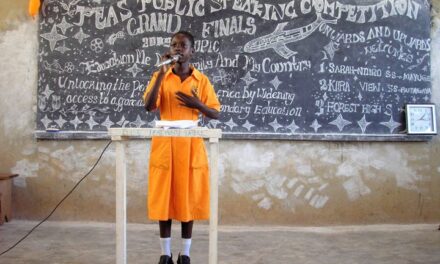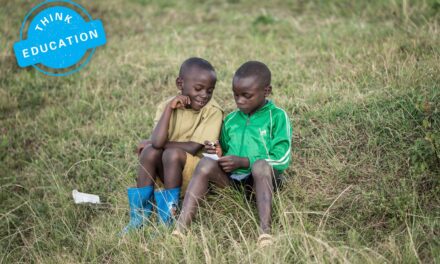This blog was written by George Psacharopolous, Adjunct Professor – Global Human Development, Georgetown University; Harry Patrinos, Practice Manager, World Bank Education; Victoria Collis, Managing Director, River Path Associates; and Emiliana Vegas, Co-Director, Center for Universal Education and Senior Fellow, Global Economy and Development. It was originally published on the Education Plus Development Brookings website on 29 April 2020.
Editor’s Note: Mass school and university closures have been among the most shocking signs of COVID-19’s power to drive a global shutdown. This blog begins the discussion on quantifying the long-term impact of lost earnings on young people and the future global economy of this unprecedented, near universal, policy response.
In mid-April, UNESCO reported 192 countries had closed all schools and universities, affecting more than 90 percent of the world’s learners: almost 1.6 billion children and young people. While some governments are starting to order teachers and students back to work, education—one of the most important drivers in human capital investment—continues to be largely closed for business.
How long schools will remain closed, how student learning will be affected, and how greatly this will affect the poorest and most vulnerable populations remain difficult to say. We do not yet know enough about what happens next: Questions range from whether it is possible for recovered patients to be reinfected to how long it will take to develop, license, and distribute a viable vaccine. But we do know that learning will indeed be lost, and that those losses will not likely be evenly distributed.
When children lose out on education, they lose out on future opportunities including economic benefits, such as additional earnings, with far-reaching consequences. Some modeling suggests that the loss of learning during the extraordinary systemic crisis of World War II still had negative impact on former students’ lives some 40 years later. And neither is the impact of lost learning confined to the individual level: For whole societies closing down education today, there will likely be significant consequences tomorrow.
Some modeling suggests that the loss of learning during the extraordinary systemic crisis of World War II still had negative impact on former students’ lives some 40 years later.
With this in mind, we have developed preliminary evidence to estimate projected potential losses of future earnings as a result of the current school closures. We present this as a starting point to help governments make increasingly informed choices about school closures, and to start a global debate on controlling and mitigating the economic downward spiral that COVID-19 is already creating.
Projected future earnings losses on students and the economy
In presenting these findings, we emphasize their status as the start, rather than the culmination, of an analytical process. There are complicating considerations we have identified, including the uneven quality of learning, differences in provision of effective distance learning, and other pressures that will come to bear on some children, such as the need to find work to help support their families. There are likely more we have not yet considered, but we anticipate others will provide them through comments and discussion around this blog. For now, we simply seek to sound the alarm about the scale of the sacrifice young people are being forced to make.
We begin by assuming that every additional year of schooling equates to 10 percent in additional future earnings. We then use the number of months of education closures to estimate the loss in marginal future earnings. For example, if Country X closes its schools and universities for four months, the loss in marginal future earnings would be 2.5 percent per year over a student’s working life. We apply this assumption to the world’s largest economy, the United States of America and its 76 million students, as our starting point. We model on a 45-year working life, a discount rate of 3 percent, and mean annual earnings of $53,490.
This quick estimate suggests lost earnings of $1,337 per year per student: a present value loss of earnings of $33,464 (63 percent of a year’s salary at current average wage rates). While this may not sound like too much of an individual price for young people to pay in the fight against COVID-19, a look at the impact on the whole of the country is much more sobering.
In this model, the cost to the United States in future earnings of four months of lost education is $2.5 trillion—12.7 percent of annual GDP. And with well over half the country’s states deciding to keep schools and universities closed until the fall at the earliest, much of this loss may well materialize. Extrapolating to the global level, on the basis that the U.S. economy represents about one-quarter of global output, these data suggest the world could lose as much as $10 trillion over the coming generation as a result of school closures today.
These figures are preliminary, and the current model simple. But they raise important questions for further investigation, including these three we hope to shed further light on in the coming weeks:
- How does the projected loss of future earnings and the severity of its impact on young people’s prospects differ between rich and poor countries?
- Within countries, which groups of children and young people are likely to suffer most from the economic impact of lost learning and access to education?
- How does the sacrifice being made by young people as a result of lost education compare with that being made by other parts of the population?
The scale of economic damage likely already stored up due to lost learning indicates the care with which governments should plan their next policy moves. Like so many aspects of this pandemic, the impact on children and young people seems more likely to take the form of a long crisis rather than a short, sharp shock.





